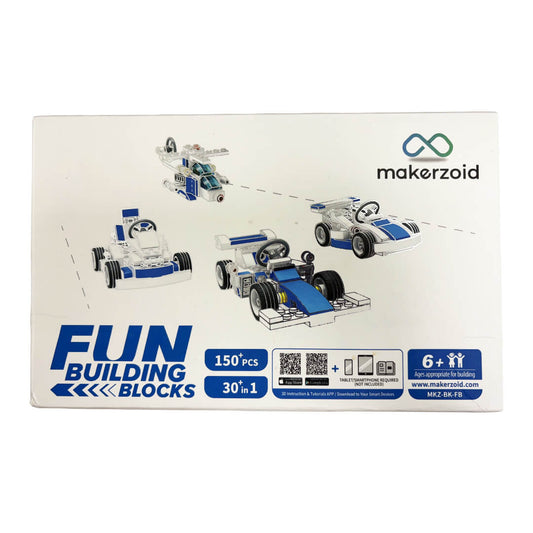
S.T.E.A.M vs S.T.E.M - The impact of arts integration on Student Success
IEM RoboticsTable of Content
- When does STEM evolve into STEAM?
- Definition of STEM vs STEAM Education
- What is STEM Education?
- What is STEAM Education?
- Key-Benefits : STEM vs STEAM Education
- Benefits of STEM Education
- Benefits of STEAM Education
- STEM vs STEAM : Main Differences
- Future of Education: STEM vs STEAM
- Conclusion
Educational systems worldwide are continually transforming to keep up with the fast pace and dynamics of a technologically driven world. STEM education, which includes science, technology, engineering, and mathematics, has been at the forefront of such a trend, and so too does STEAM—STEM, including an arts addition to that basic acronym. Some of these academics refer to the enrichment value, but other educators refer to it as a diminution: whether adding arts steamrolls STEM into obscurity or is just right. This article discusses the importance and benefits of STEAM education, the differences between STEM and STEAM education, and the impacts of arts integration on student achievement and career readiness.
When does STEM evolve into STEAM?
In 2006, when mainstreaming the arts into STEM education started gaining momentum, STEM gave way to STEAM. Georgette Yakman, a researcher and educator, popularized the concept by creating the STEAM framework to highlight innovative thinking and creativity in addition to the standard topics of STEM. The STEAM method recognizes the role of artistry in encouraging innovation because STEM focuses only on the sciences, technology, engineering, and mathematics. By combining technical knowledge with creative thinking, the arts were embedded to help students acquire this holistic set of skills and make their learning more engaging and applicable in this increasingly interdisciplinary world. The shift from STEM to STEAM reflects a greater recognition that innovation and problem-solving frequently require creative and analytical methods, particularly in domains like technology development, digital media, and product design.
Definition of STEM VS STEAM Education
Definition of STEM VS STEAM Education Education is essential for preparing children for success. While there is a strong focus on STEM education now, that is, Science, Technology, Engineering, and Mathematics, another trend is gaining momentum - STEAM education. How do you feel about the different meanings of these acronyms? Let's learn all you need to know about STEM and STEAM education. STEM is important because this skill set is now increasingly in demand in an increasingly technology-driven world. Advancements in these areas foster innovation and make lives well. As education strives to meet the changing landscape of a dynamic global economy, the collaboration between science and the arts is not only beneficial but necessary. By embracing STEAM, we unlock the full potential of the next generation and free them to create innovative solutions to thrive and grow in a much more diverse and interconnected world.
What is STEM Education?
STEM education was implemented because future generations lacked the necessary skills to succeed within current and future economies. While many other competencies have been known to lead to success, STEM education encourages creativity, innovation, critical thinking, problem-solving, and teamwork. Here's an explanation of each part of STEM:
1. Science is the study of the natural world through experiments and observation. It incorporates environmental science, physics, chemistry, and biology.
2. Technology refers to using instruments, frameworks, and gadgets to improve human life and resolve problems. This includes digital media, software development, and information technology.
3. Engineering involves the design, construction, and operation of equipment, processes, and buildings using scientific principles. It has several disciplines, such as aerospace, mechanical, electrical, and civil engineering.
4. Mathematics is the study of numbers, quantities, forms, and patterns. It is the backbone of solving problems in any other STEM area, whether it is statistical modeling, developing algorithms, or analyzing data.
What is STEAM Education?
1. Science is the observation, experimentation, and reasoning-based study of the natural world and its occurrences. This includes environmental science, physics, chemistry, and biology.
2. Technology is the application of instruments, machinery, and systems to improve human existence and solve issues. It comprises fields such as digital technologies, robotics, and computer science.
3. Engineering is the field that specializes in using scientific concepts to design and construct systems, gadgets, and structures. Its specialties include mechanical, civil, electrical, and aerospace engineering.
4. Art: This incorporates design thinking and creativity into the educational process. It emphasizes creativity, beauty, and problem-solving through visual arts, music, dance, theater, and graphic design.
5. Mathematics is the study of numbers, patterns, and computations. It provides basic problem-solving capabilities in every field, especially in data analysis, algorithms, and statistical modeling.
Key Benefits: STEM vs STEAM Education
STEM and STEAM education meaning foster critical thinking, problem-solving, and innovation. STEAM's inclusion of art enhances creativity, while STEM focuses on technical and scientific proficiency.
Benefits of STEM Education
STEM education provides students with strong analytical and technical skills, preparing them for careers in high-demand fields. It encourages logical thinking, problem-solving, and real-world application of knowledge.
● Analytical and Creative Thinking
STEM education prioritizes logic, accuracy, and data-driven solutions. On the other hand, STEAM promotes students' inclusion of creativity into their approaches to problem-solving. For instance, STEAM might consider the design's aesthetics and user experience, whereas STEM could concentrate on creating a helpful framework.
● Skillset Development
STEM education prepares students for specialized occupations in science and technology by emphasizing technical proficiency and critical thinking. STEAM expands this skill set by incorporating creativity, communication, and emotional intelligence—skills increasingly valued in transdisciplinary and collaborative settings.
● Career Opportunities
STEAM provides access to various areas, including game design, architecture, and user experience (UX) development. In contrast, STEM careers typically focus on technical positions like software engineering, data analysis, and scientific research. STEAM prepares kids for various job choices by fusing technology and the arts.
Benefits of STEAM Education
STEAM education integrates to develop students' overall skill set. It increases their involvement and promotes critical thinking and cooperation, thus preparing them for creative and analytical skill-based careers.
● Growing Student's Engagement
By combining technical courses with creative initiatives, STEAM education improves student engagement. For instance, developing a marketing campaign for a solar-powered car as part of the STEM course and designing it as part of the Arts curriculum would fall under the category of a STEAM curriculum. This approach boosts student motivation and creates a deeper relationship with the subject matter.
● Advancement of Global
STEAM education develops both hard and soft skills. Through art, children learn to be empathetic, tell stories, and work in a team while being taught scientific analysis, engineering, or coding. A person who achieves this balance is more holistic and better able to face the challenges of the modern world.
● Developing Creativity and Problem-Solving Skills
Many groundbreaking inventions result from the combination of science and art. Steve Jobs, for example, is famous for promoting the nexus of design and technology at Apple, producing beautiful and valuable products. This kind of interdisciplinary thinking is encouraged by STEAM education, which empowers students to tackle problems creatively and technically.
STEM VS STEAM: Main Differences
| Aspects | S.T.E.M | S.T.E.A.M |
| Main Goal | To qualify students for careers in technical and scientific fields by providing solid foundations in problem-solving and logical reasoning. | To foster well-rounded individuals proficient in technical subjects and creative expression, bridging art with STEM. |
| Creativity | STEM encourages critical thinking and innovation, but creativity is not as central to the curriculum. Focuses on problem-solving and solutions. | STEAM strongly emphasizes creativity, helping students use imagination and artistic expression in conjunction with technical skills. |
| Approaches | Primarily analytical and data-driven, emphasizing measurable outcomes and solving real-world problems through science and mathematics | An interdisciplinary approach combining logical analysis with creativity and artistic design to solve problems and innovate. |
| Educational Philosophy | STEM focuses on producing individuals who can solve complex technical problems and excel in scientific, engineering, and technological fields. | STEAM aims to produce individuals skilled in technical subjects and equipped with creative thinking and design skills that can be applied in real-world contexts. |
| Skill Development | Strong focus on technical skills such as data analysis, problem-solving, coding, and engineering design principles. | It focuses on technical skills from STEM but adds artistic skills such as design thinking, visual arts, creative writing, and performance. |
| Real-World Applications | Engineering innovations, software development, scientific research, environmental solutions, and technology-based industries. | Product design, multimedia arts, architecture, game development, entertainment industries, and design fields. |
| Impact on Innovation | STEM innovation is sometimes driven by technological advances, data analysis, and engineering to solve complex technical problems. | STEAM drives innovation by combining technology and creative arts to bring new ways of designing, digital media, and artistic expression in various fields. |
| Cultural Relevance | STEM education is the path to progress in the sciences and technology, but its approach should be more culturally responsive and focus on general problem-solving skills. | STEAM is often more inclusive of cultural expression, allowing students to incorporate personal creativity, diverse perspectives, and artistic traditions into their work. |
Future of Education: STEM or STEAM?
● Preparing for a Dynamic Job Market
There is a growing demand for individuals combining technical expertise with creativity. Jobs in biotechnology, sustainable architecture, and user experience design, for example, require various skills that STEAM education helps foster.
● Building Inclusive Learning Environments
Owing to STEAM education, the technical disciplines have become more accessible and frequently attract students who would typically not make it in a purely STEM course. Students can also pursue their interests or talents as STEAM blends the arts, making for education and workforces that reflect diversity and inclusivity.
● Bridging the Gap between STEM and STEAM
Teachers can combine the best that STEM and STEAM offer to create a balanced approach rather than treating them like rival frameworks. For instance, schools can use arts-based projects with a STEM-themed curriculum to encourage creativity and participatory engagement.
Conclusion
The STEM vs STEAM debate reflects a much more significant discussion on the education revolution. STEAM goes beyond by encouraging creativity, empathy, and holistic problem-solving. On the other hand, STEM focuses on technical and analytical skills. A future vision inspired by STEAM education envisions a world where solutions to complex problems demand both creativity and accuracy. When the arts are incorporated with STEM, teachers can prepare children for occupations that require flexibility, interdisciplinary thinking, and a balance between technical and creative skills. Coordination between science and the arts is beneficial and essential as education evolves and aligns with the needs of an ever-changing global economy. Therefore, embracing STEAM can truly unleash the full potential of the future generation, which will become more creative in solving real problems and thrive in today's multicultural and interconnected society.




